White Tie was once a mandatory dress code for certain classes and functions. Failure to show up in a “full-fig” outfit was a massive faux pas. Wearing a tuxedo or Black Tie ensemble might have even gotten the lord of the manor mistaken for a waiter.
- Brief History of the Rise and Fall of White Tie
- 8 Factors for the Demise of White Tie: 1. It Has a Historic Silhouette
- 2 It’s a Restrictive Dress Code
- 3. It’s a (Literally) Restrictive Dress Code
- 4. It Can Be Difficult To Manage Alone
- 5. It’s Viewed as Classist
- 6. It Requires Precise Tailoring
- 7. There are Few Occasions to Wear It
- 8. The Rise of Black Tie
- Conclusion
- Outfit Rundown
On the flip side, these days, White Tie outfits are usually only seen on TV shows like Downton Abbey or Peaky Blinders, at the Vienna Opera Ball, or a gala maybe at opening night, or at certain concerts like Dandy Wellington, Max Raabe, or Henry de Winter.
So, obviously, the question arises: how did a dress code that was once the standard for a classy evening wedding, an ensemble that was regularly featured in periodicals, in advertising, or lampooned in cartoons for kids to something that the common man will probably never wear?
Brief History of the Rise and Fall of White Tie
So, first, let’s talk briefly about the history and how the popularity of White Tie rose and eventually declined. The White Tie dress code was really formed during a time of very strict social and class regimentation. People of certain classes very strongly identified with what they wear and what their sense of belonging was.
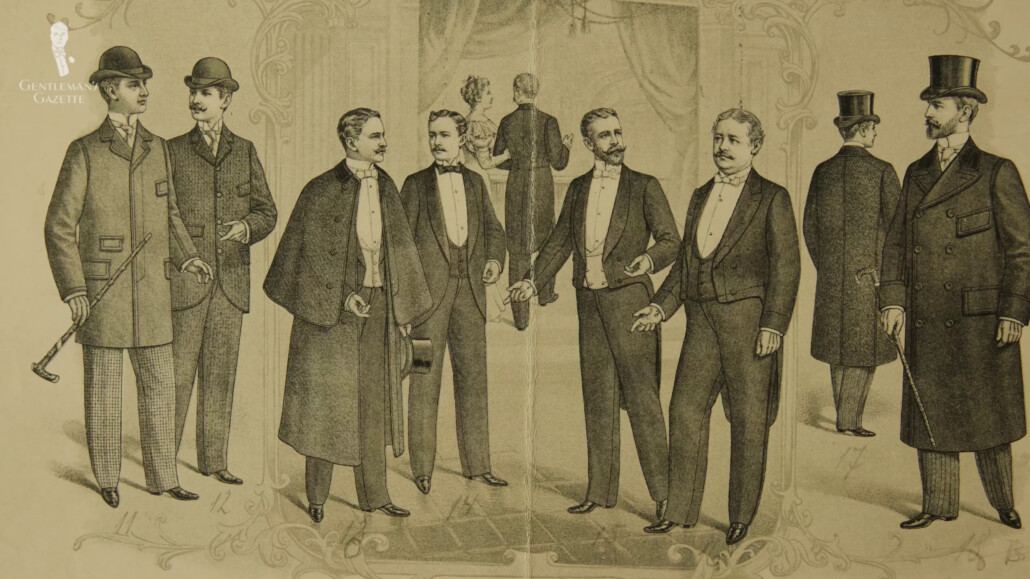
Traditionally, clothes were changed to differentiate between daywear and evening wear. If there was a special emphasis, it was definitely on the evening clothes. Unlike today, in the 18th century, evening wear for gentlemen had a kaleidoscopic color scheme. During the first half of the 19th century, color palettes became much more sedate and much more in line with the black or dark evening wear that we know today.
Early menswear influencer Beau Brummell definitely had a huge impact on that trend and if you want to learn more about how he impacted White Tie and evening wear, check out our in-depth article on Beau.
Beau Brummell: The First Menswear Influencer?

About the late 19th century, White Tie had essentially become the contemporary choice of dress for proper evening wear. It consisted of a black body coat, which got its name from the fact that it was tailored very close to the body.
Unlike a modern menswear jacket, you could clearly see in the back it had more darts and also buttons that were left over from a time when men buttoned the front of the coattails to the back. That’s also how the tail shape evolved, and it has this kind of cutaway look.
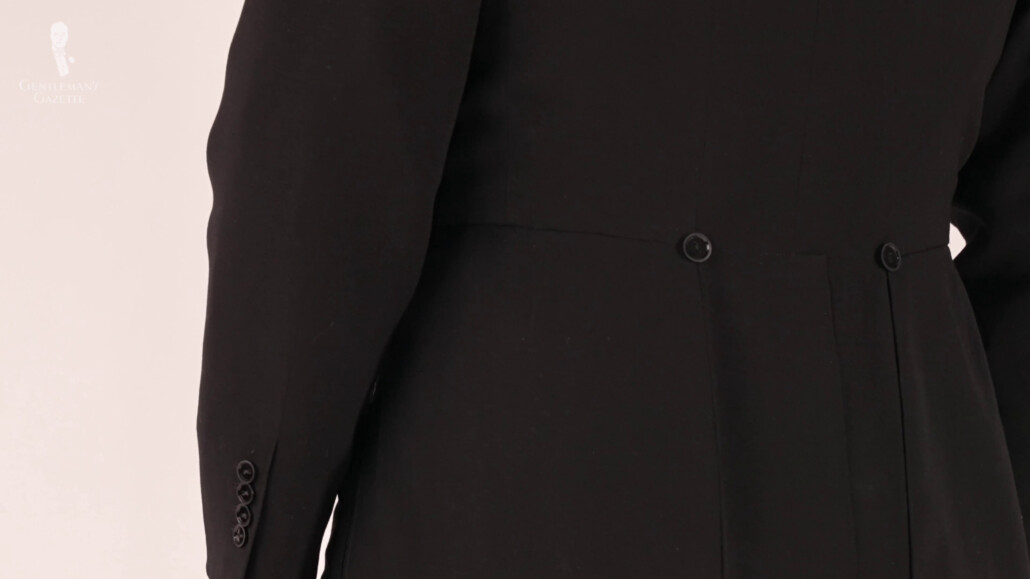
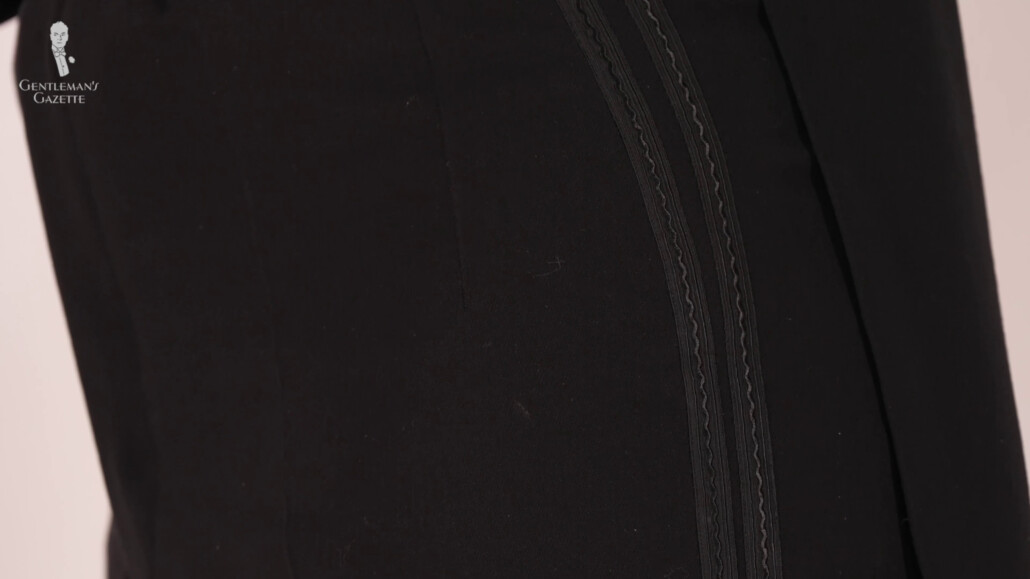
The tails of the coat reach down to about the knees. In the front, you would see merely decorative buttons, sometimes six, sometimes four. Again, this was a leftover from a time when you actually buttoned the front. But, as things evolved over time and evenings got warmer, the garment got lighter, there was less fabric, and the buttons became merely decorative.
Trousers or pants were tailored of a matching fabric and had a side stripe, typically two (which are called “galon”) in Europe, or sometimes also just one in the US. Because the garment had long tails, it was combined with an elevated top hat to keep everything proportional.
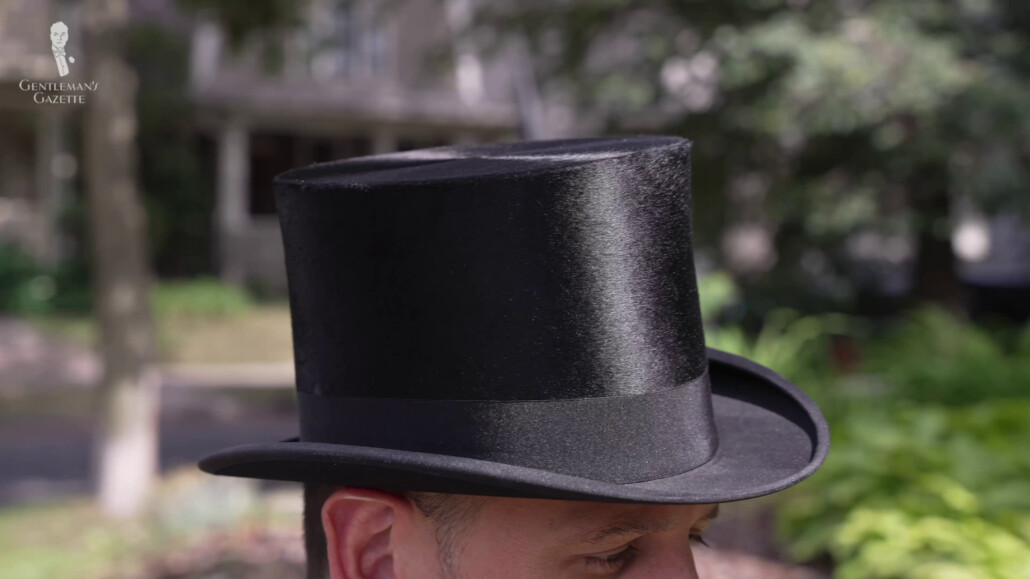
The White Tie tailcoat is the equivalent of the morning coat for daywear. The morning coat is also a body coat and has long tails. If you want to learn more about it, we’ve got an in-depth morning coat guide for you.
Over time, White Tie even spawned a companion dress code, almost like a little brother – so-called “Black Tie.” During the early 20th century, White Tie remained the gold standard for proper evening wear. Men would wear it for galas or even parties and, of course, also for cultural events, such as the Opera or theater. But, as the 20th century wore on, White Tie became less and less common. But, in our 20th century, it was really something that was more reserved for state ceremonies or rituals.
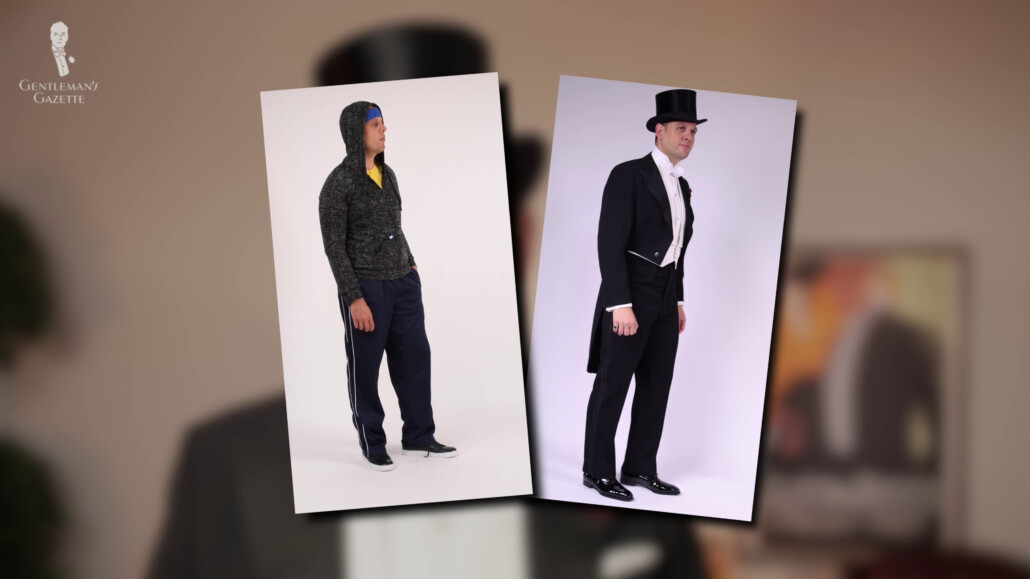
Frankly, every man I’ve ever seen wearing White Tie looks a lot better than in regular clothes. If you’ve never worn it and you have the chance, I highly recommend you go for it.
Frankly, in our book, it’s a shame that White Tie is not as popular as it once used to be, and we found eight factors that contributed to its demise.
8 Factors for the Demise of White Tie: 1. It Has a Historic Silhouette
White Tie, just like a morning coat, is really a holdover from the 19th century. They feature prominent tails and an elongated silhouette. At the time, they were taking over from the more formal and stiff frock coat.
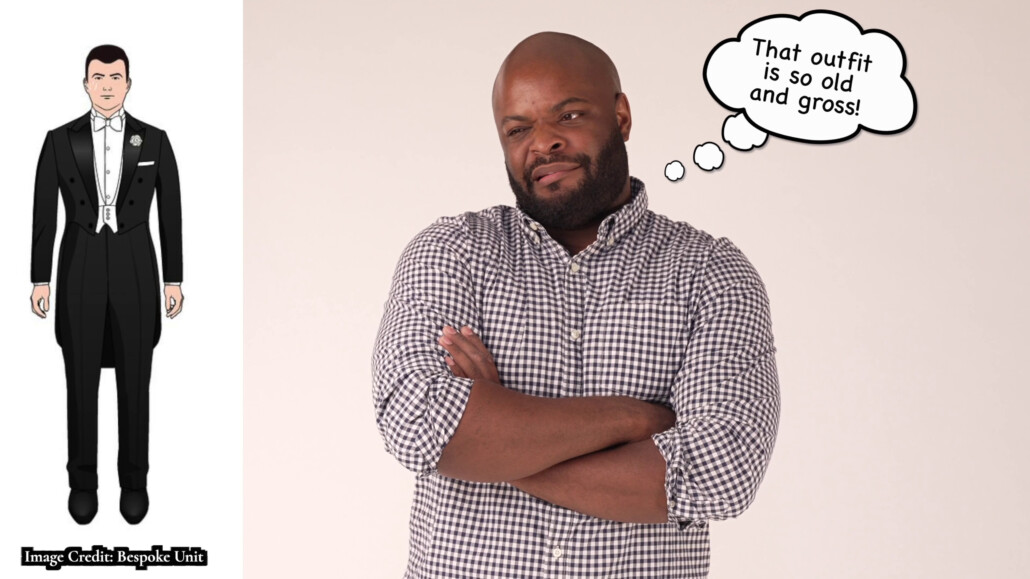
A long tail silhouette is not something you’ll find in any other men’s garment today. As such, a White Tie ensemble seems strange to most men because they’re just not used to it.
Most people would also describe it as out of place or dated. They don’t see it today and they maybe have seen it in the photo album of their great-great-grandpa and associate it more with the museum than real life today. Formal evening pumps may also be associated with a more feminine dress code, when in fact, this is something that men have worn for many decades.
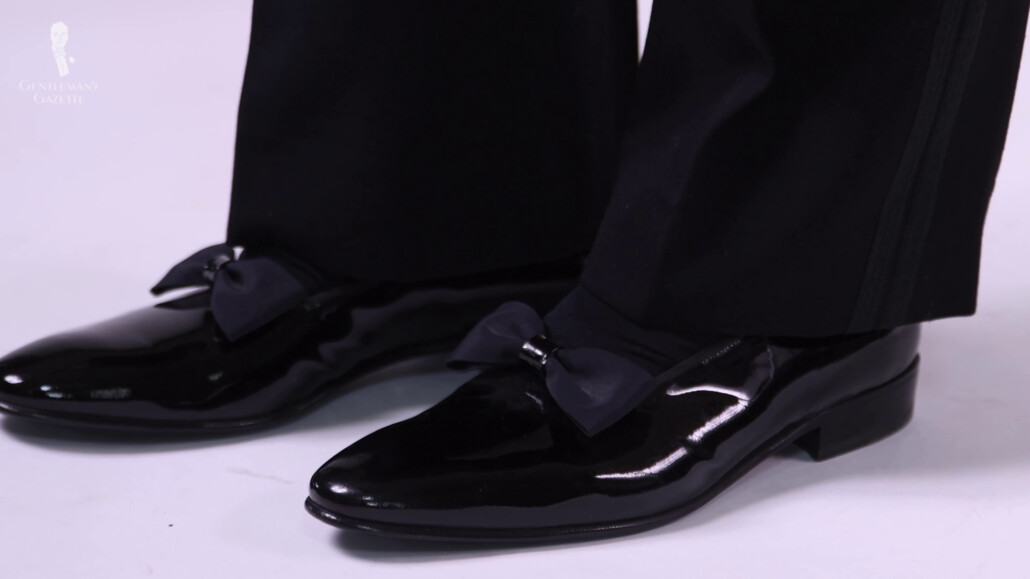
Nevertheless, some men might be embarrassed to wear pumps and they feel a White Tie ensemble is more of a costume than something that makes them look good and special. Some people may also feel like they look like Dracula, an orchestra conductor, or a circus director. So, overall, because of the historical origins and the looks, it may feel too outdated or almost reenactment-like for most people out there.
2 It’s a Restrictive Dress Code
If you think about 21st-century menswear, it’s all geared towards casualness and individuality. A White Tie, on the other hand, requires very specific elements, colors, textures, and materials to make it look proper.
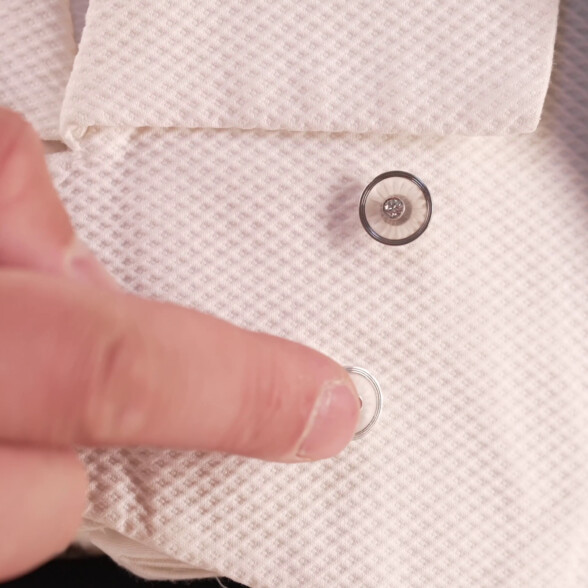
Very Specific Elements
Proper White Tie requires very specific elements, colors, textures, and materials.
So, at first glance, there might not be any chance for individuality, and it is also much stiffer and more structured, which most people would consider being uncomfortable these days. You need black over-the-calf silk socks and, while you can get those in the Fort Belvedere shop, you also need White Tie pique waistcoats, shirts, bow ties, detachable collars, maybe a watch chain, white gloves, an evening scarf, maybe an evening overcoat, pumps, or patent leather capless Oxfords, and last but not least, a top hat.
White Tie Accessories & Shoes
In line with the decline in popularity, finding a well-made tailcoat is something you probably only get from a tailor these days or from specialty retailers. Certainly not from H&M. Also, many of the elements you get for White Tie cannot really be worn with other outfits, so the cost-per-wear can be quite high.
And yes, if you wear a White Tie tail with a regular white shirt, it looks just a bit off. There’s also this Downton Abbey scene where Lord Grantham couldn’t find a proper evening shirt, so he couldn’t wear White Tie at all.
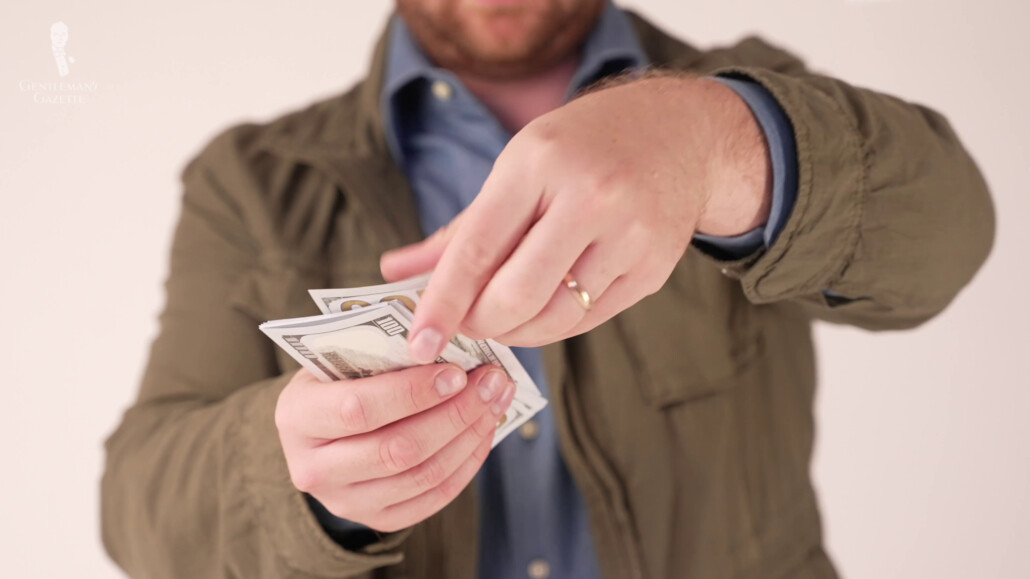
The only exception back in the day were waiters, who would wear a tailcoat with a black waistcoat and a black bow tie, so they could always easily be identified in a larger group of White Tie ensembles. Frankly, I can’t remember ever having seen a waiter in a tailcoat. Maybe I’m just attending the wrong establishments.
I mean, by design, White Tie is really all about black and white, and the only opportunities for a dash of color are the boutonniere, the pocket square, or maybe the socks. Of course, subtle changes – such as a lapel width or the lapel facings, the size of the boutonniere, the type of buttons you use, the type of shoes you wear, or socks – are all things that allow you to show some personality. But, of course, only in the limited confined range of the White Tie ensemble. And that is not something most men in this world strive for today.
3. It’s a (Literally) Restrictive Dress Code
Comfort is not an absolute thing. In the US, some men will decide to wear Crocs because they find them comfortable, whereas a Frenchman would be horribly uncomfortable wearing them and would rather prefer something that looks a certain way, so he is not mentally uncomfortable.
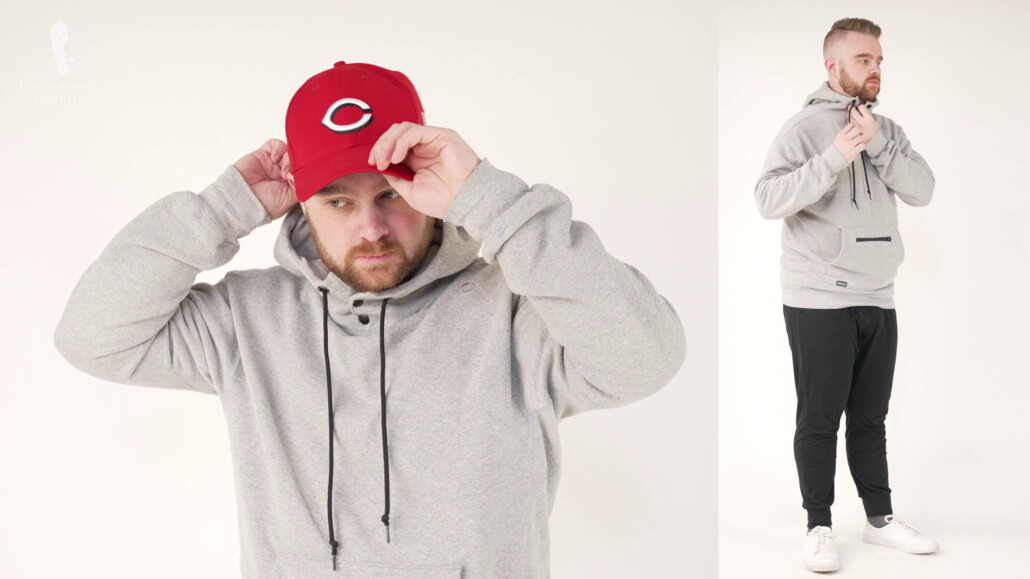
Modern menswear, like athleisure, is all about perceived comfort; stretchy materials that feel rather softer to touch on the skin, that are sweatpants or athleisure, are all the rage. On the other hand, wearing a suit, for most men, is uncomfortable. Often the reason is that it’s a cheap suit with a bad interlining that makes you sweat and constricts your movement because it’s not a good cut. And while that doesn’t have to be the case, it would be a lie to argue that White Tie is always super comfortable in most modern men’s minds.
While my father-in-law grew up looking at a starched shirt as the default, most younger men today do not starch their shirts or wear starched shirts. So, wearing a shirt with a starch shirtfront or Marcella bib insert can be rather uncomfortable.
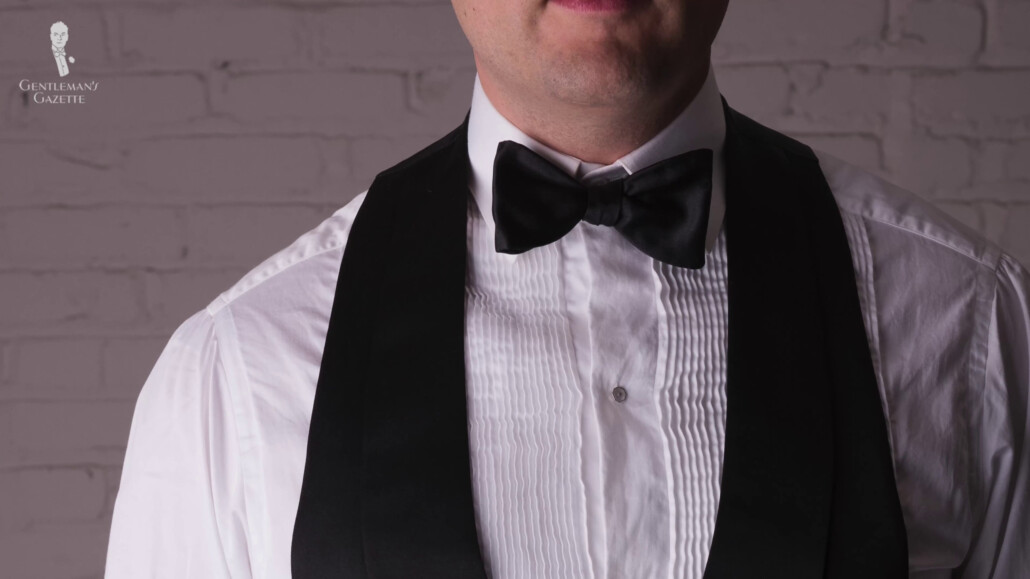
In contrast to that, probably the most formal garment a man today can imagine is the Black Tie tuxedo or dinner jacket. That, overall, is softer because the shirt is not starched, the collar is not stiff and detachable but soft and attached. This was also the reason the Duke of Windsor was a big fan of the Black Tie outfit.
4. It Can Be Difficult To Manage Alone
When White Tie was in vogue for the aristocracy, they typically had a valet that could help them get dressed. King Charles III still has valets today. The cool thing about valets was that they wouldn’t just help you get dressed, but they would also take care of all your wardrobe, brush out the jackets, make sure everything was washed, cleaned, and pristine, and that the shirt studs had been taken out, and the cufflinks were ready, and so forth.
Throughout the 20th century, valets became less and less common, and so became the White Tie dress code. Think about it: if you wear White Tie every night for dinner and you have to starch and launder your collars and your shirts, it requires a lot of time, and you can only do that if you really don’t have anything else to do.
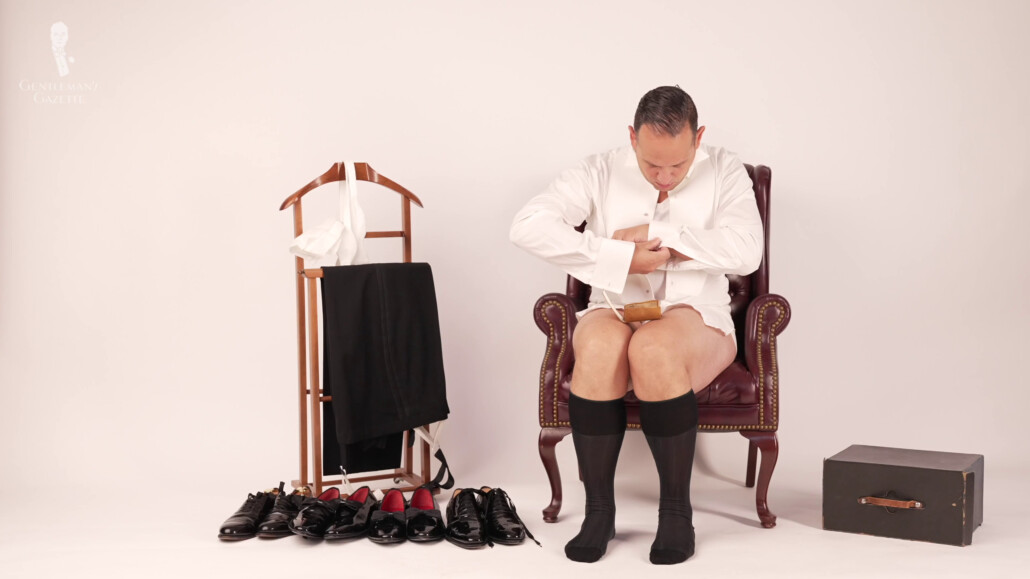
I’m living proof that you don’t need any servants or a valet to get into White Tie, but a helping hand is helpful for many. They can help put in the suspenders or maybe the cufflinks. Maybe they can also brush off some dust to make sure everything looks the way it should.
Speaking from experience, it can be really difficult to get the collar on because you have four layers of fabric in the front that all have to go around a stud, and the collar is rather stiff, so especially if the collar is maybe a little snug side, you may stand there a little while before it all fits together. I remember, on my wedding day, we all stood there and probably took 20 minutes to get that detachable collar on!
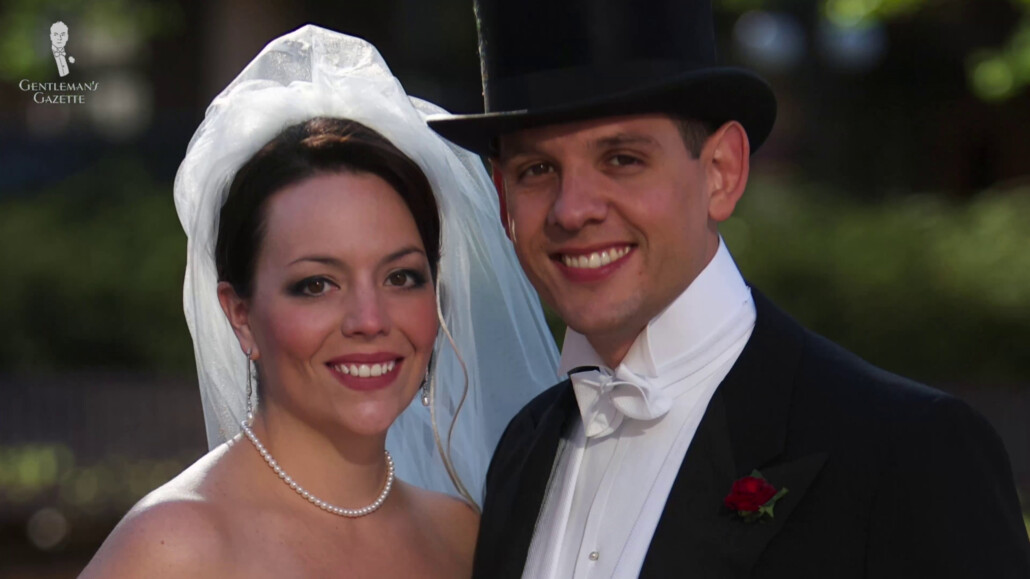
Apparently, for all of us peasants who can’t afford a valet, there is now a collar puller tool, which is similar to that of a buttonhook for button boots that are supposed to help you get the shirts over that collars that button.
At the end of the day, men like convenience, and White Tie is anything but convenient.
5. It’s Viewed as Classist
In fact, that’s true. White Tie is most closely associated with the aristocracy. As such, only men of established wealthy families would wear it, not the common man on the street. White Tie was a great way for men who belonged to old money to differentiate themselves from people with new money.
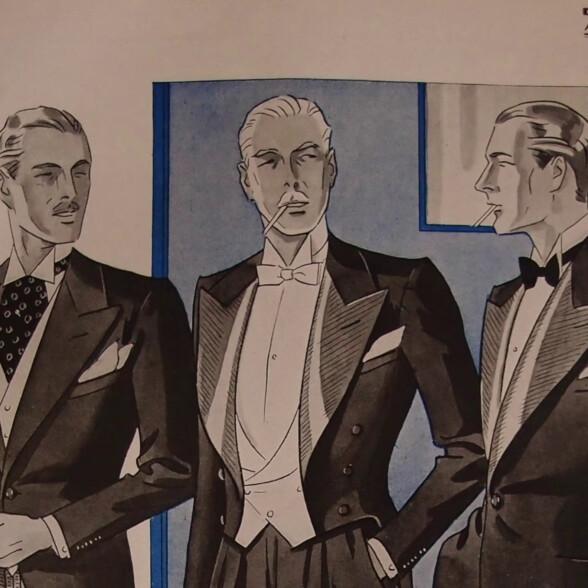
White Tie & Privilege
Only men of established wealthy families would wear White Tie, which is a way for men who belonged to old money to differentiate themselves from people with new money.
Throughout the 20th century and even before that, the aristocracy around the world started to decline, whereas meritocracy started to flourish. That meant old money lost power and influence, and White Tie went with it. Of course, the intricate systems of dress code and etiquette were all there to establish a certain hierarchy or pecking order. Knowledge of its conventions and use, or the lack thereof, was a way to ferret out people with new money.
So, by the early 20th century, Black Tie was definitely on the rise when it came to evening wear – first with young people, but then also with older gentlemen.
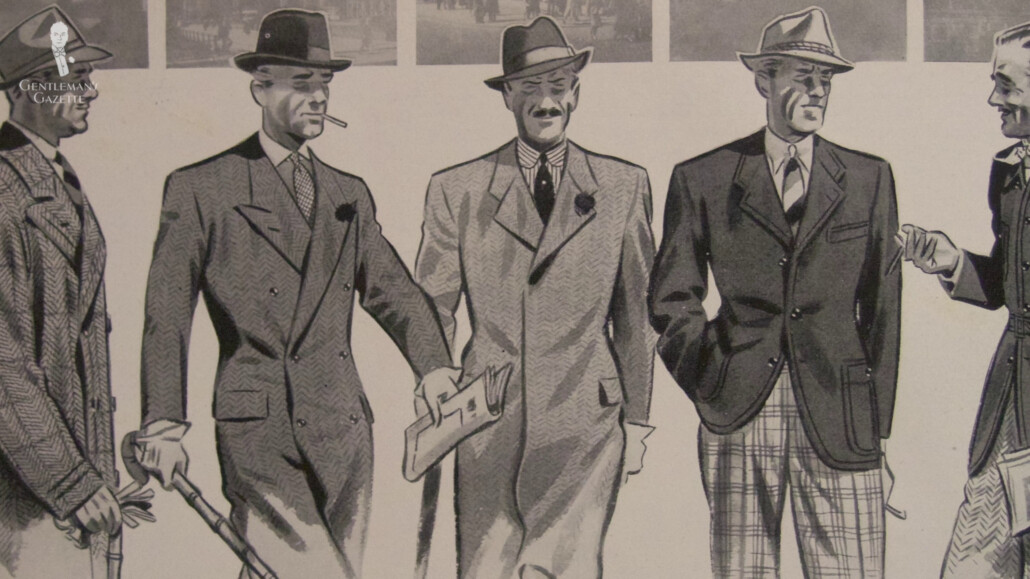
Of course, major shifts in clothes appeared after each of the World Wars. So, during World War I, White Tie became less common and Black Tie more common. After World War II and ever since thereafter, things have gotten more and more casual.
Perhaps the common goal to achieve victory necessitated a breakdown of previous built-up class and hierarchy rules. They had to focus on what mattered and leverage the strength of a unified nation. Afterward, the over-emphasis on class separation wasn’t worth reviving. Especially considering all the rationing, looking at White Tie outfits could be considered quite indulgent and luxurious and therefore, also unpatriotic.
6. It Requires Precise Tailoring
In general, all garments look best if they’re properly tailored for you because you’re not symmetrical. For White Tie, that is even more true. We all have a jacket that’s maybe slightly too big, has over-extended shoulders, or maybe that puddling in your pants may be overlooked in a day suit.
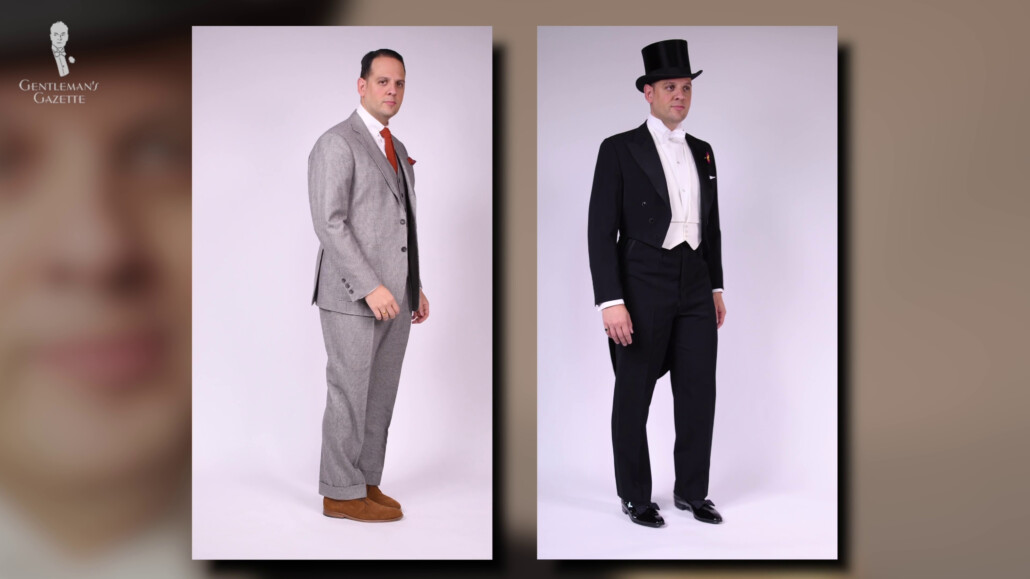
In a White Tie ensemble, they become glaringly obvious. Maybe it’s because the color scheme is so toned down and uniform that all the details jump out more at you. Also, the shape and cut of the body coat is designed to fit much closer to your body compared to a suit, which has more drape. Because of that, it’s hard for a store to fit you in a tailcoat, and, therefore, you typically don’t find them off-the-rack but have to go to your tailor and have them custom-made.
Ready-to-Wear, Made-to-Measure & Bespoke – Terminology Explained
Of course, when White Tie was popular, and gentlemen had valets, they had the money to have their entire wardrobe custom-made. Unfortunately, today, with the increase in cost of labor, it is really difficult to have your entire wardrobe made bespoke. I mean, realistically, it’s probably less than one percent of the planet who can afford a custom-made suit for themselves.
One of the reasons White Tie is so flattering to the wearer is the silhouette. You have broad shoulders, which are accentuated by the bow tie. Further down, the precise length of the jacket accentuates the natural waist and then, again, the hips. Overall, it’s a very flattering silhouette for most men, but only if it’s tailored the right way.
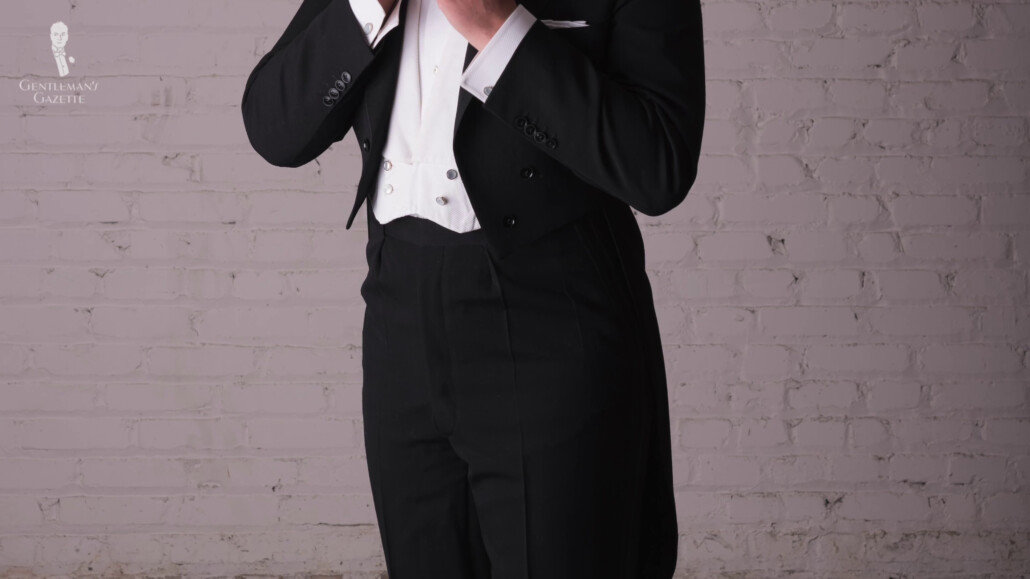
As the Complete Book of Etiquette says, “Tailored to fit, ‘White Tie’ can give any man a special dignity and distinction as do no other clothes,” and I couldn’t agree more with them. However, when done improperly, White Tie can make you look like a clown or someone who just went to a rental store and is going to a costume party.
With all that said, I certainly gained a few pounds in the last few years, and this White Tie ensemble doesn’t fit as well as it used to. Time to go to a tailor or get a new outfit!
7. There are Few Occasions to Wear It
At the core, dress codes for evening wear are there to help people enjoy everything more without having to think about what everyone is wearing, or what they have to wear.
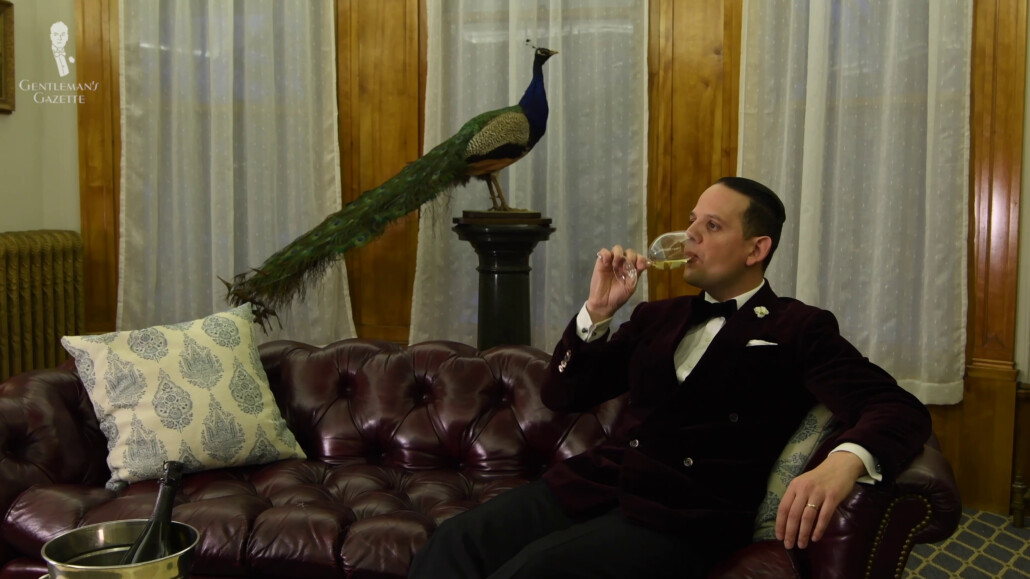
Today, there just aren’t many events that have a White Tie dress code anymore. I mean, there are the Nobel Prize ceremonies, there’s the Vienna Opera Ball or the Met Gala. But especially in the lattermost case, what they consider to be White Tie is certainly not the traditional understanding of that dress code.
Certainly many Imperial and Royal ceremonies and functions still feature White Tie, but as the reigning generation gets younger and younger, White Tie becomes less and less important. There are still a few holdouts where men like to wear White Tie.
For example, at high society weddings or if you’re a clotheshorse like me. So, on my wedding day, of course, I wanted to wear everything, so I started out in a morning coat and, later on, switched to the White Tie evening ensemble. At the time, I could certainly not have afforded a custom-made tailcoat ensemble, so it was vintage, and it was made bespoke for a different person by Hussmüller in München.
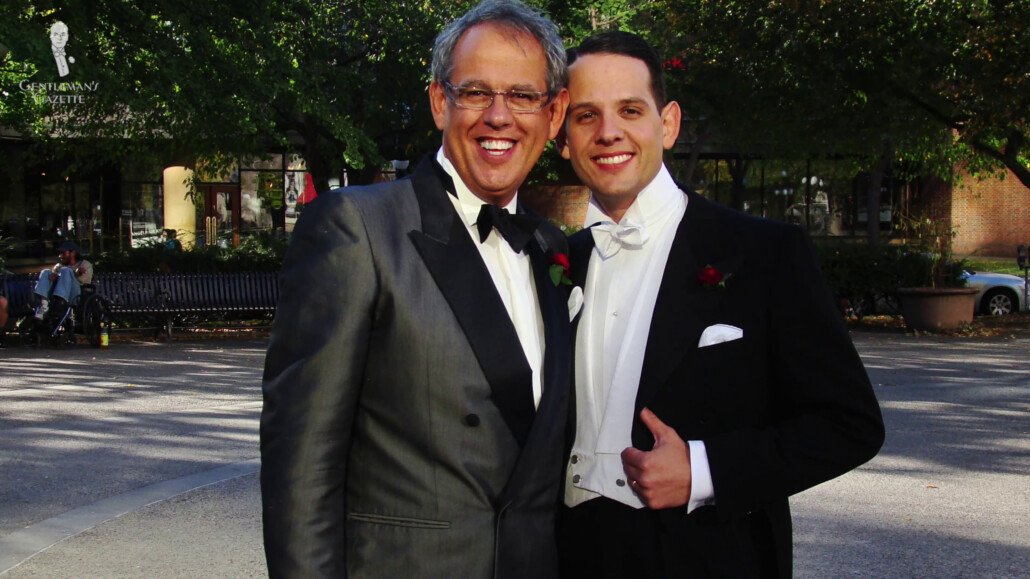
Maybe if you’re a part of a very special private club or if you live in Austria, or if you’re part of vintage enthusiasts who like to throw authentic 1920s and 30s parties, you probably won’t wear White Tie very often or have the chance to do so.
How cool would it be if there were events where you could really dress up and be among like-minded people, having a good time looking your best?
8. The Rise of Black Tie
Last but not least, the biggest nail in the coffin of White Tie was most likely the Black Tie dress code. I won’t go too much into the details of Black Tie because you can check them out in our ultimate guide.
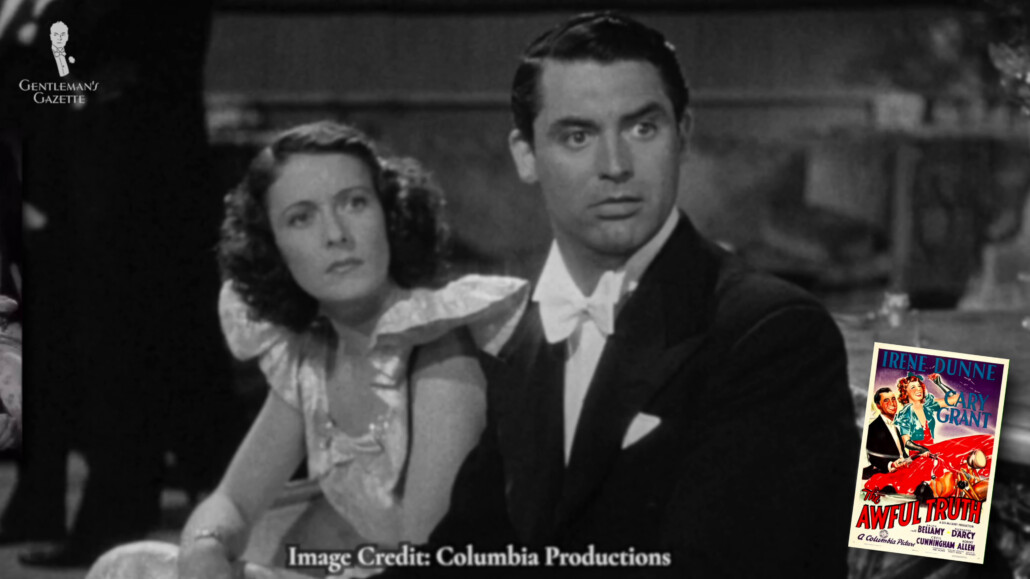
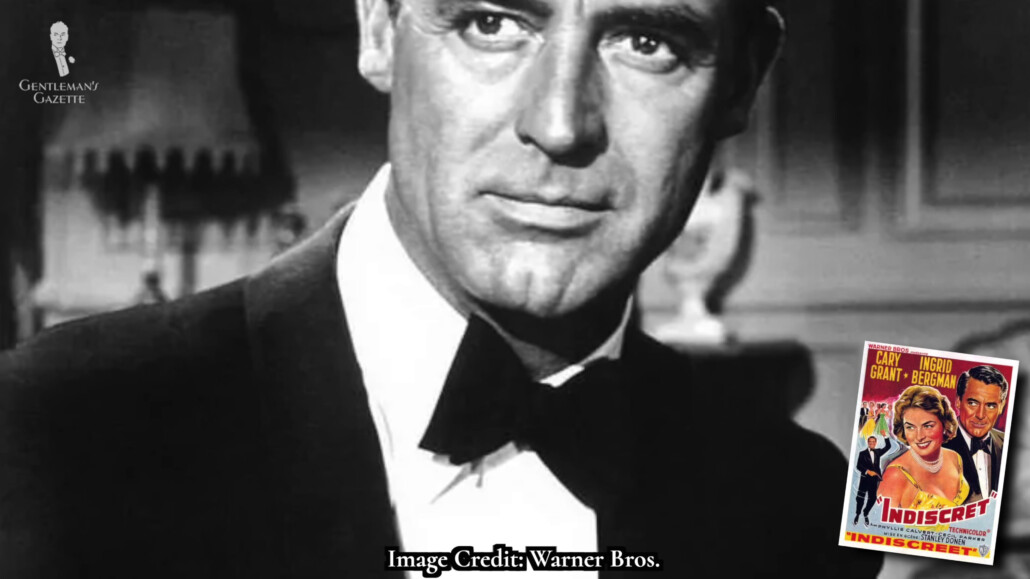
The reality is by the 1920s, men wore Black Tie ensembles at parties while women were present. Yes, shocking, right? You could also wear it at restaurants or cafes, and it just became much more acceptable. Also, movies in the late 30s still showed White Tie at very formal parties, but by the 40s, you would see Black Tie dominating the evening wear space.
What Men REALLY Wore in the 1940s
In the 1953 edition of her guide to etiquette, Lillian Eichler Watson claimed, “The modern trend is to wear tails only for the most formal and ceremonious functions, such as important formal dinners, balls, elaborate evening weddings, and opening night at the Opera.” In line with that, John F. Kennedy was the last American president to wear a White Tie for his inaugural ball.
If you take a look across the pond, the last time White Tie was required at the Mansion House dinner hosted by the Lord Mayor of London was in 1995. Why was that? Well, a tuxedo looks much more similar to a suit or a jacket or blazer that most men are still accustomed to. You can also find them off-the-rack in many more retailers, you need fewer accessories, it’s less stiff and restrictive, and so men enjoy wearing it more.
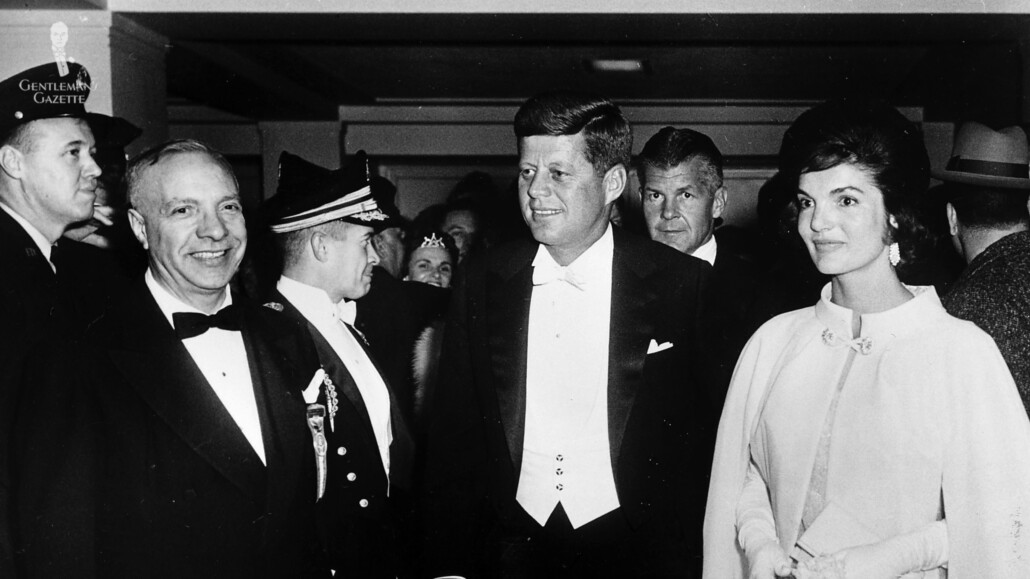
That being said, even fewer and fewer men own a tuxedo, although post-COVID, there has been a rise because people want to go out and party again and look their very best. That being said, after all those shutdowns, more formal clothing by today’s standards, such as Black Tie tuxedos, are in high demand these days because people finally want to get out, get married, enjoy themselves again, dress up, and feel and look their best.
Learn about the most storied Viennese evening shirt maker
Conclusion
So, in a nutshell, White Tie today is no longer de rigueur for dinner wear. But, despite its decline, it’s still an enchanting dress code, especially for someone who is a clotheshorse like we here at the Gentleman’s Gazette.
If you ever have the opportunity to wear it, seize it because it is something I wish every man could experience for themselves at least once in their lifetime. After all, today, you can wear anything you want. That also means you can dress more formally than most people out there.
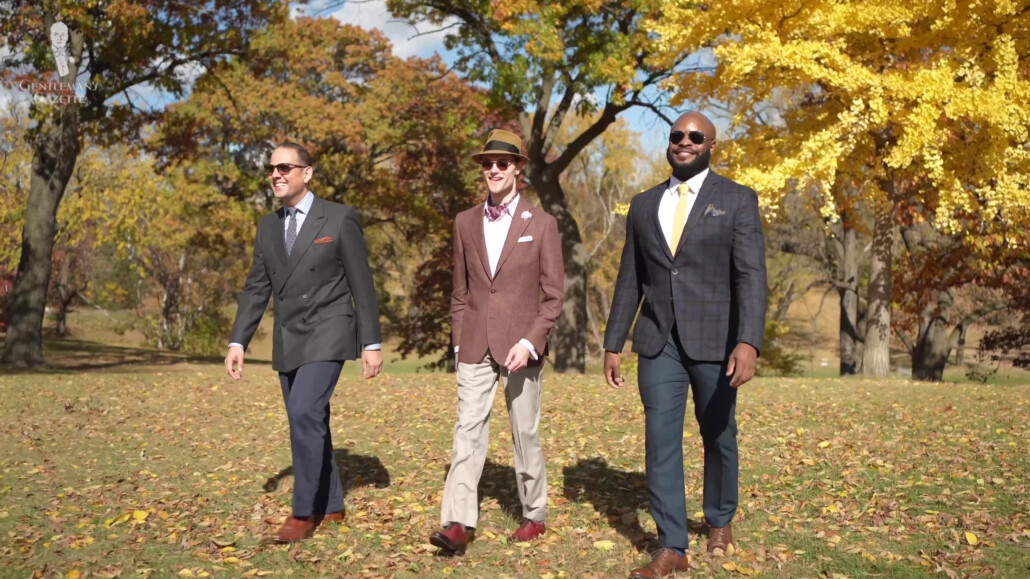
Even though White Tie isn’t as popular as it once was, there’s no reason why you can’t get out your tails, your top hat, and have some fun like Fred Astaire.
Outfit Rundown
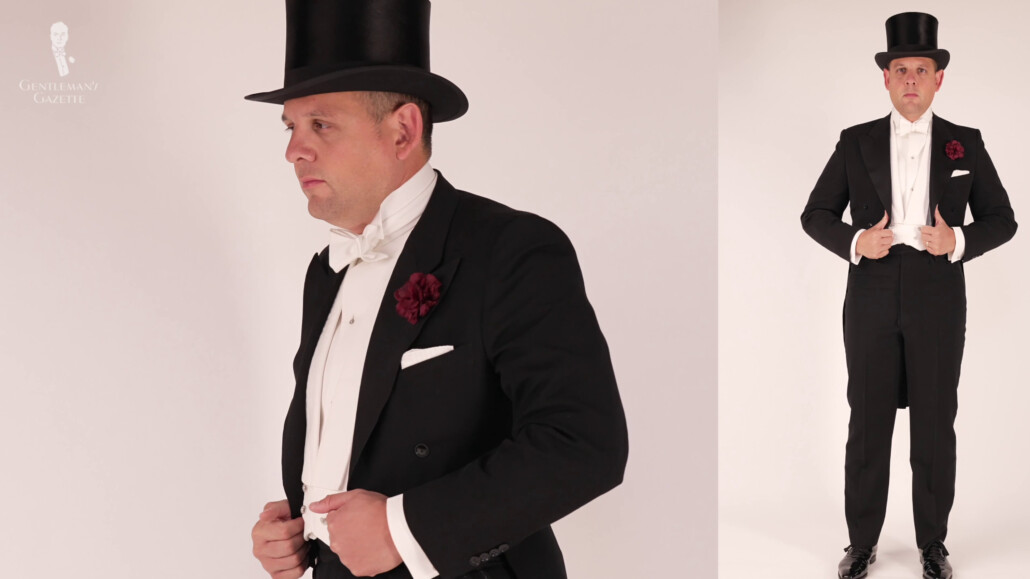
In today’s outfit, I’m, of course, wearing a White Tie ensemble. It consists of a silk top hat, which is, I think, from the 1950s in Germany. My tailcoat ensemble was made in the late 60s by Hussmüller in München, which is no longer in existence.
My shirt with a Marcella pique bib is from Brooks Brothers. My waistcoat is a vintage AKCO from Great Britain. My full dress set, consisting of double-sided cufflinks, shirt studs, as well as waistcoat buttons with crystal diamond and platinum, is from Hardy & Hayes Co. in Pittsburgh. It is vintage, and I doubt they are still around today.
My bow tie is sized in a fixed length so you don’t see it in the back of the shirt, no ugly adjusters. It’s from Fort Belvedere, and you can find it in our shop, just like this dark red carnation boutonniere, which has this beautiful old-world vibe, as well as the white linen pocket square and the silk socks, which are extremely fine.
My shoes are a pair of capless patent leather Oxford shoes from Enzo Bonafe. I could have also worn the Opera pumps with a bow, which is something you can really only wear with White Tie or maybe Black Tie. The shoelaces in my Oxfords are part of the evening shoelace range, which you can also find in our shop.


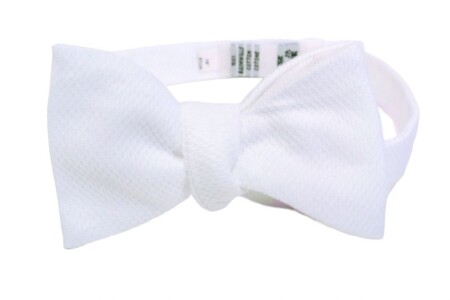
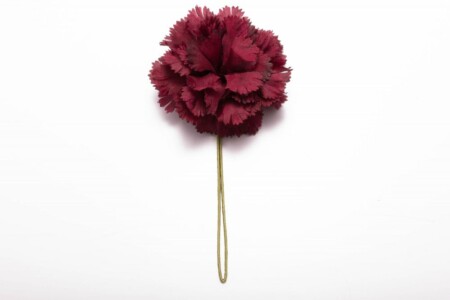
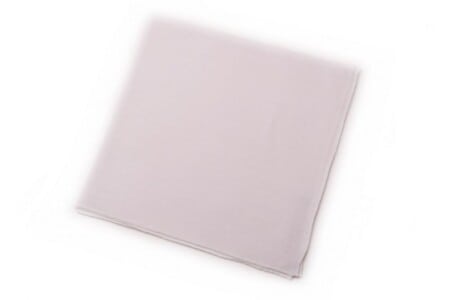
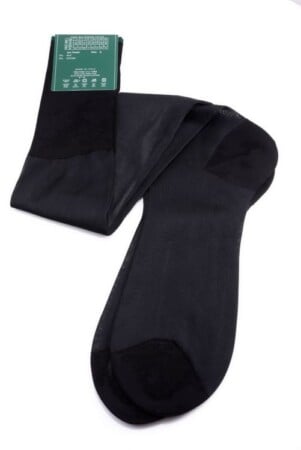
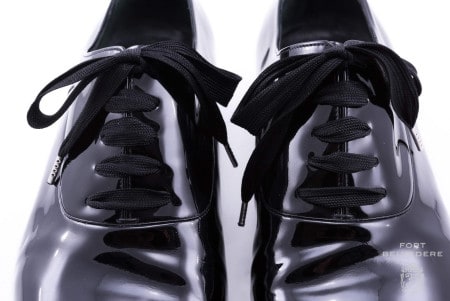
As a member of the Supreme Council of the Scottish Rite for the Northern Masonic Jurisdiction of the Unites States of America, I am obligated to wear white tie for all formal events, usually amounting to two or more a year.
I had mine custom made for my wedding to my now ex-wife. She questioned why i was going to such an expense when I could simply rent one. I responded asking if she was going to rent her wedding gown. She said not, of course, to which I responded, “Then why should I do anything less?” I then added, “Besides, I can guaranty you of two things: One, you will never wear your wedding dress again and two, I shall definitely wear my tails on many future occasions.”
I was correct on both counts
That was funny to read. Good for you !
I am glad to say that I wore white tie and tails for almost four years in college for our Glee Club that always performed in white tie; but no more. Now they wear black tie. Additionally, I wore white tie to several weddings; no top hat, but for one we wore white gloves! One recent embarrassing event which showed the potential problem/s with white tie was former President Trump’s appearance in such formal garb with Queen Elizabeth and (I think Prince Phillip, or was it then-Prince Charles?). No comment really necessary if you see that photograph, but the word embarrassing comes to mind. My bottom line is many men don’t care how they look; and they hate getting dressed up at all.
Oddly enough, I disagree on the comfort issue. I find white tie more comfortable than black tie, partly because the tailcoat, despite the tails, is actually noticeably lighter than the black tie jacket. This is partly because the front has the most (heavy) layers of horsehair canvas, interlining, etc. and in a white tie tailcoat most of the front is cut away, leaving a much lighter jacket overall. So, if the fit is as good as it needs to be, it is actually more comfortable (assuming you wear a starched front shirt with both, as one ideally should).
The waistcoat allows considerable room for individuality (while staying within the code) if one abandons the arguably boring standard single-breasted, square corner-lapelled, backless modern default. They can be double breasted, buttoned in different ways, have round corners on the lapels or no lapels at all, be made of ivory or white silk instead of marcella pique… Plenty of room for discreet experimentation while remaining totally classic. Nothing flashy or showy, and only the true connoisseurs would ever notice…
I am delighted to have occasions to wear either, but I particularly enjoy the ones where white tie is an option.
Traditional evening wear must have developed as an adaptation to color schemes which predominated in urban areas at night 100+ years ago. Back then, artificial lighting was scarcer, weaker, and more expensive. Neon and fluorescent colors in clothing did not exist. Therefore, the best way to stand out in the dark would be to wear black and white.
For similar reasons, old-fashioned prison uniforms were also black and white, while modern ones tend to be neon orange.